Ask any lawn owner or gardener about their least favorite part of owning a lawn, and you will definitely hear “weeding”. Weeds steal precious space, sunlight, water, and valuable nutrients from the desirable plants of your lawn and garden.
That is not all; they also look unappealing and can ruin the aesthetics of your lawn as well. In this article, I’ll share with you my tips on what kills weeds permanently.
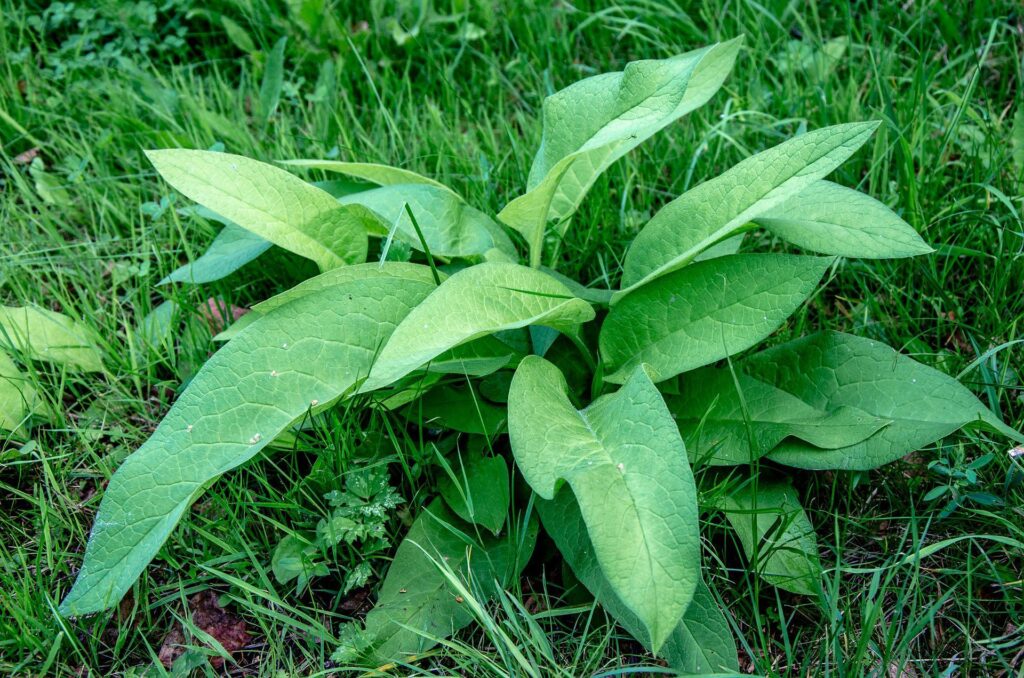
A plantain weed plant.
Getting rid of weeds is not an easy job! Weeds will always find a way to come back and invade your lawns and gardens. So if you want to get rid of pesky lawn weeds, you will have to keep working, permanently! It is a never-ending task and one that any keen gardener has to come back to, season after season.
However, if you know how to eradicate weeds properly and how to stop them from spreading and coming back, the amount of work and the money that you will have to spend on getting rid of weeds will be significantly reduced.
So, if you are someone who is looking to remove weeds from your lawn, this article is for you!
In this article, we will cover everything, from getting rid of weeds to stopping them from coming back. We will also tell you about the natural ways to kill and prevent weeds from spreading in your lawn. Happy Reading!
Understanding Weeds
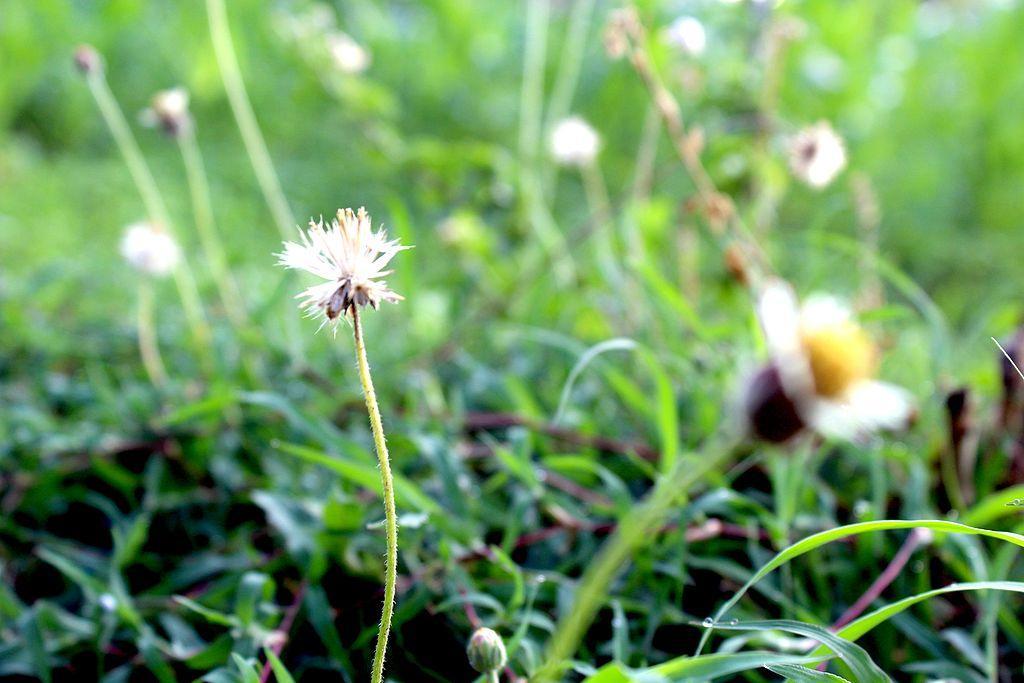
If you understand weeds, they might even help you save your beloved lawn.
Loosely defined, a weed is a plant that grows in an area where it is not wanted. So, by this definition, a weed can be any plant: a grass, a shrub, a herb, or a tree. Weeds can be native species of plants that grow uncontrollably in a place, or they can be introduced or invasive species of plants that got out of hand.
Weeds come in all sizes, shapes, and colors. A plant can be desirable in one geographic location and yet a weed in another location. However, what all weeds share is their incredible resilience. Weeds are masters of survival.
No matter how hard you try, weeds somehow manage to thrive.
Weeds indeed are a nightmare for gardeners and lawn owners worldwide. However, weeds are not always the bad guys of Kingdom Plantae. In certain situations, weeds can also be beneficial. For example, they can improve soil fertility or indicate an underlying soil problem that needs fixing.
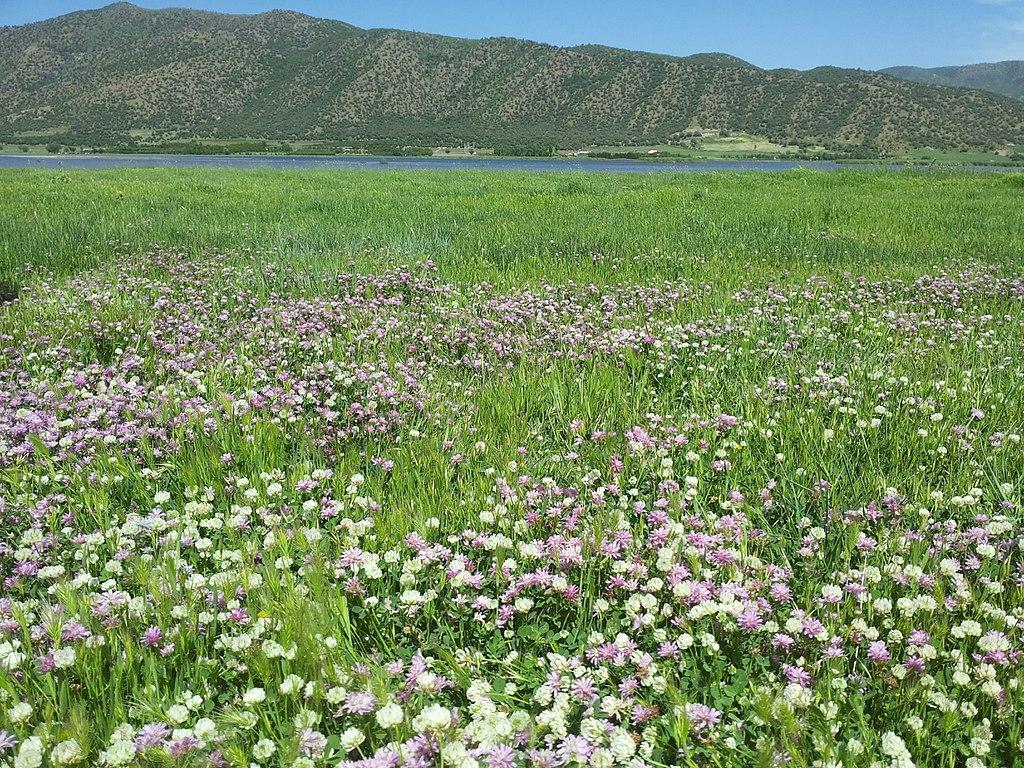
Some weeds are used as cover crops to improve soil fertility.
For instance, the weeds of the legume family can pull nitrogen out of the atmosphere and fix it into the soil. So, if you see a lot of leguminous weeds in an area, it means the soil there is deficient in nitrogen.
Most plants cannot grow well in nitrogen-poor soils, and on such grounds, you will have to add nitrogen fertilizers. Also, over time, leguminous weeds can improve soil nitrogen status. In fact, clover and vetch, both leguminous plants, are used as “cover crops” to enhance soil quality.
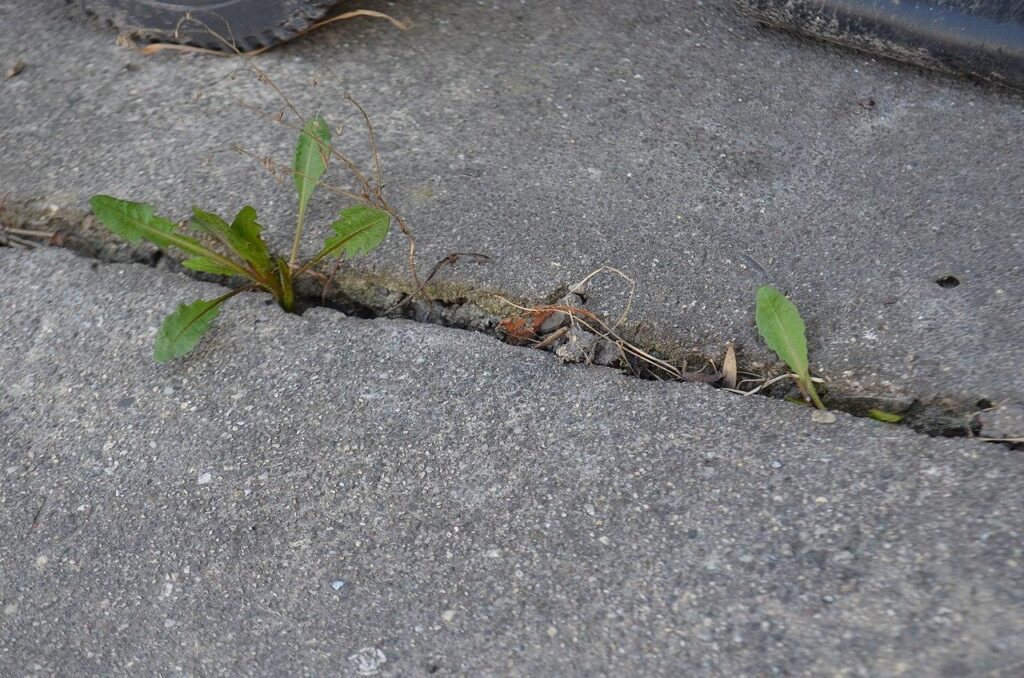
Weeds growing in compact soils indicate the soil needs aeration.
Similarly, weeds can be an indicator of underlying soil problems. For instance, weeds with deep tap roots such as dandelions often grow in compacted soils. The presence of these weeds can indicate that the soil requires aeration.
Moreover, creeping buttercup thrives in heavy soil deficient in organic matter. So, if you have a weed problem, it is always better to first identify the weed.
It could not only help you find the best way to get rid of a particular weed but will also help you fix the underlying problem that might be causing the weed infestation in the first place.
Why Do Weeds Keep Growing Back?
What could be worse than having weeds? Weeds that keep coming back! Despite your best efforts, weeds grow again and again from time to time. They are hardy plants that manage to thrive even without any usual care that you give the plants you want to grow.
Therefore, you must invest in weed control continuously if you’re going to keep your lawn healthy.
To stop a weed from coming back, it is essential to understand the type of weed you are dealing with. Weeds are broadly classified into the following three groups:
Annual Weeds: These weeds only last for one year or a single growing season. They only spread by seed and tend to germinate when the soil is disturbed. They can be a serious issue in new turfs and plantings.
Related: Top 10 Weeds With Purple Flowers (And How To Get Rid Of Them?)
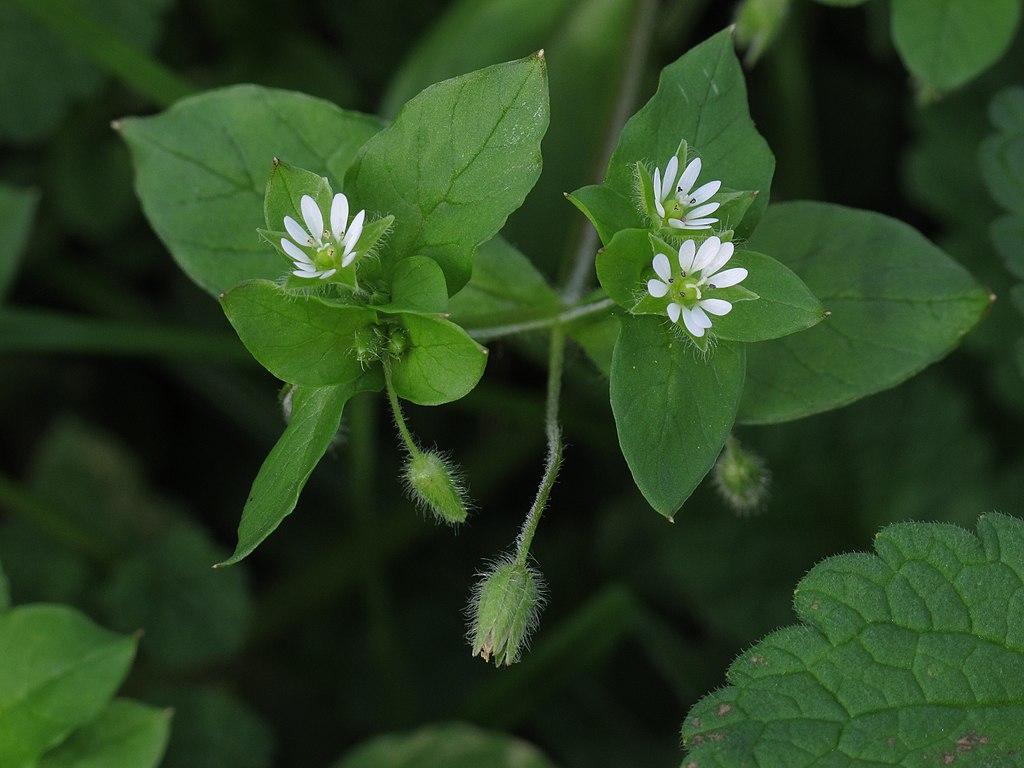
Common chickweed: An annual weed.
Perennial Weeds: These weeds last for many years. They can reproduce by both seeds and vegetative parts of the plant, i.e., rhizomes and stolons. They are the most common weeds of landscape plantings and established lawns.
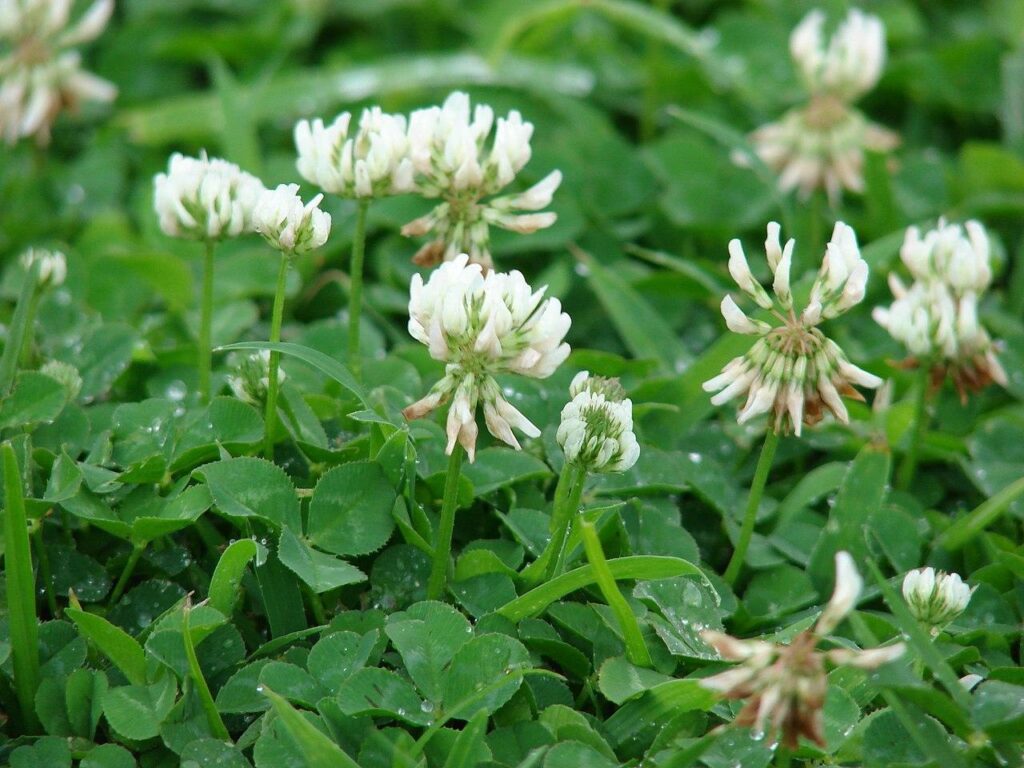
White clover: A perennial weed.
Biennial Weeds: These weeds complete their growth in two years. In the first year, they grow and store food. While in the second year, they produce seeds and spread. Biennial weeds are most abundant in pastures, fencerows, and no-till fields that are not mowed.
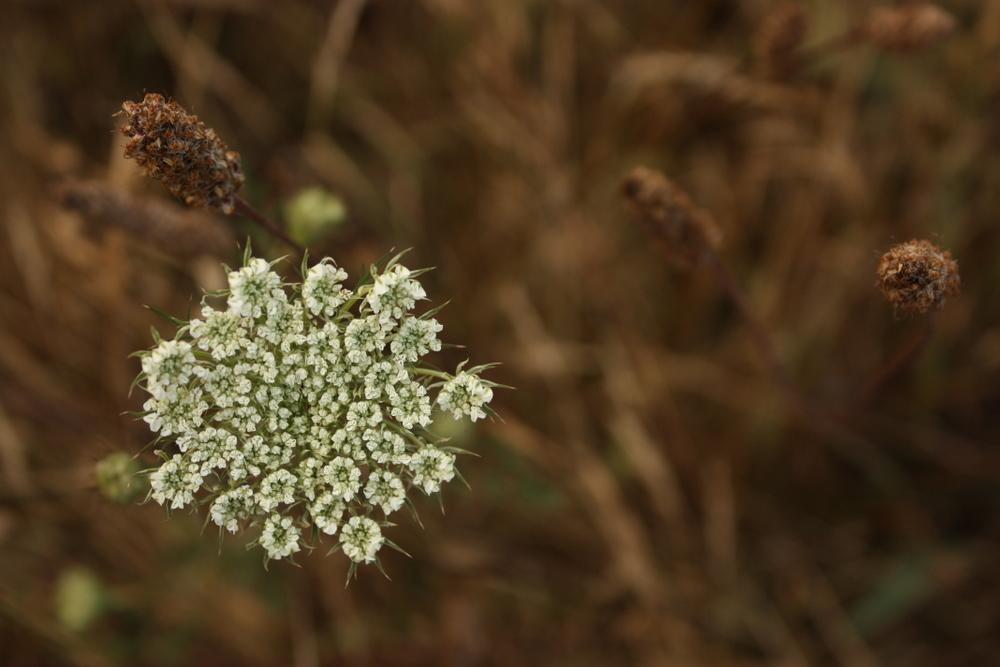
Queen Anne’s Lace: A biennial weed.
Now that you know about the life cycles of different kinds of weeds, let’s look at why some weeds keep coming back despite all that we do to eradicate them.
Incorrect Or Incomplete Removal
It is the most common reason behind the recurrence of a weed infestation. Some weeds have deep roots, and merely pulling the plant is not enough to remove them.
Other weeds have seeds that spread around while you are plucking the weeds. Such efforts of removing weeds can do more harm than good. In the end, you may end up having more weeds on your lawn than what were there in the first place.
So, always start by first identifying the weed. Once you know what kind of weed you are dealing with, you can find a proper way of removing the weed from the ground.
Cross-Contamination
Cross-contamination is another reason why some weeds keep coming back season after season. For example, you might introduce the seeds of a new weed in your lawn while trying to eradicate already present weeds.
Even though it is something intentional, it can have devastating results in the end. Sometimes, simply moving around on your lawn can also introduce new weed seeds to make matters even worse.
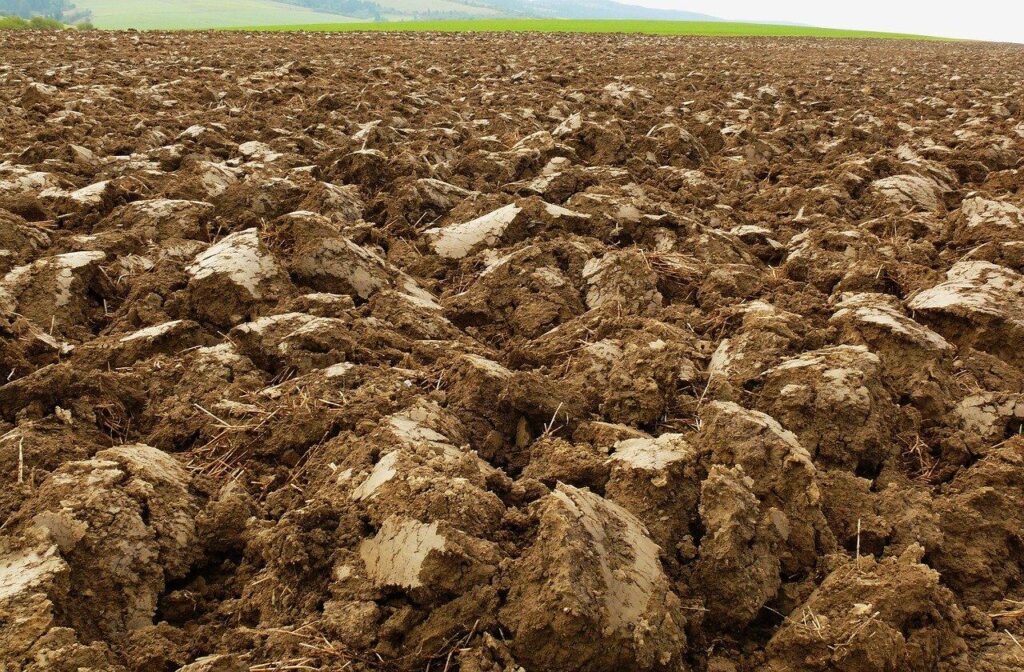
Replacing topsoil from an unknown source can also sometimes introduce weeds to your lawn.
Seeds of unwanted plants can stick with your shoes and get carried around from one place to the other. Weeds seeds can even hitch a ride in your pet’s fur or feet and spread around the lawn. You may also contaminate your yard with new weed seeds while replacing the topsoil.
To avoid this scenario, make sure that any new planting medium you bring in your lawn is free of weeds and weed seeds. Also, restricting pet and animal movement on the lawn and washing your shoes after coming from a hike can also reduce the chances of a weed infestation.
Improper Herbicide Application
There are many possibilities of error in choosing and applying a herbicide that might lead to a comeback of weeds season after season. From the wrong choice of a herbicide to incorrect technique and application in the wrong spots, many factors can cause the weeds to reappear without any warning.
For instance, perennial weeds that last for many years cannot be controlled well with pre-emergent pesticides once established.
These pesky weeds require multiple herbicide applications over a period of several years in order to completely eradicate them, and they are often best controlled using a post-emergent herbicide.
Furthermore, the use of herbicide at the wrong time during the lifecycle of a weed can also be a reason why a particular weed keeps coming back. So, make sure you do your research before using a herbicide on your lawn. Here’s a link to a guide from the University of Tennessee that might help you in your search and the proper use of a herbicide.
Other Factors
You cannot just blame your pet’s paws or shoes for contaminating your lawn with weeds. Sometimes, simple environmental factors such as air and water can also introduce weeds to your lawn.
The best way to protect your lawn from weeds that are introduced by natural elements is to use a pre-emergent herbicide. However, as already stated, the timing and technique of herbicide application are of critical importance in such scenarios.
Related: Common Lawn Weeds With Yellow Flowers (And How To Get Rid Of Them?)
How To Get Rid Of Weeds For Good?
One of the worst parts of weed control is that it never seems to stop. Once you are done removing a set of stubborn pesky weeds from your lawn, a new fleet of weeds is fully ready to spring into the action. So, is there a way to get rid of weeds for good?
According to some expert gardeners, you can never entirely rid yourself of weeds.
However, many products are available in the market that claim to remove weeds permanently. The truth is you will have to work continuously and tirelessly if you want your yard free of weeds and if you want to stop the weeds from coming back.
Here’s a list of some of the best weed control methods that you can choose from according to your needs and get rid of pesky lawn weeds, once and for all.
Vinegar As A Weed Killer

Vinegar is an excellent weed killer, especially when used with soap.
Wouldn’t it be great, if you could kill weeds and also save money? Well, vinegar just does that. Vinegar, a spray bottle, and a dish detergent are all the things that you need for making your own homemade weed killer.
The acetic acid present in the vinegar sucks up the water from the weeds, which dries them up. And we already know that the living thing cannot survive without water. While, the soap breaks down the plant’s cuticle (outer coat), which helps the vinegar in its job.
In fact, vinegar has been so effective in controlling weeds that it has also been referred to as an alternative for Glyphosate, a widely used and best-selling herbicide. However, the vinegar used in this comparison had a 20% concentration of acetic acid compared to the 5% present in household vinegar.
However, it is not to say that you cannot use household vinegar to control weeds on your lawn. Many lawn owners and gardeners have used it, and it has shown promising results. Here’s how you can make your own herbicide using vinegar.
Vinegar Weed Killer Recipe
To make your own weed killer at home, all you need is two cups of vinegar and one and a half tablespoons of dish detergent. If you want a strong vinegar weed killer, we suggest you use pickling vinegar as it has an acetic acid concentration of 7%.
However, you cannot use horticultural vinegar in homemade vinegar weed killer unless you are registered to use it.
Nonetheless, once you have collected these ingredients, put them in a spray bottle and mix well. Then, spot spray your homemade vinegar weed killer in the areas where you do not want the weed to grow, and you are good to go. However, take care and do not spray the plants in the surrounding area.
3-Ingredient Weed Killer
Some gardeners also suggest adding salt to the mix in order to permanently eradicate the weeds. However, it is a very potent combination. Therefore, it should only be used in places where you do not want any vegetation to grow, such as walkways, driveways, and patios.
To do this, add around two cups of salt and one tablespoon of liquid dish soap into a gallon of vinegar and mix well. After that, put the mixture into a spray bottle and spot spray the solution onto the areas where you do not want any vegetation to grow.
For weeds, it is best to use the mixture in broad daylight. You will see the weed wither and die in a matter of just a few hours.
Application Tips
- Soap/Vinegar weed killer is a non-selective herbicide. So, be careful not to spray it on the surrounding plants.
- Choose a sunny day with no wind to spray the weeds with vinegar/soap weed killer. The sun will help the vinegar dry out the weeds while the absence of wind will reduce the chances of spraying the weed killer on surrounding plants.
- Vinegar/soap weed killer is not effective against all types of weeds; It works best against smaller weeds with shallow roots.
- Only spray enough to wet the leaves, and do not drench the weeds with vinegar/soap weed killer.
- Ensure you put on all the protective gear while spraying the herbicide on your lawn.
Bleach As A Weed Killer

If vinegar/soap weed killer doesn’t work for you, bleach definitely will.
In addition to being an excellent spot cleaner, bleach can also be used as an effective weed killer. However, using bleach can be harmful to your soil, and in cases where bleach has been used extensively on the soil, nothing will grow in it.
Moreover, it would help if you also did your research before using bleach as a weed killer on your lawn. Depending on where you live, you might not be able to use bleach as a herbicide. Contact your local authorities before use.
The bleach weed killer works by changing the pH of the soil. It makes the soil so alkaline that nothing is able to grow in it for a long time. Although it is a potent weed killer, bleach weed is not safe, so exercise caution while using it in your lawn.
Making Bleach Weed Killer
Take one cup of bleach and mix it with one tablespoon of dish soap and one cup of water. Mix the ingredients well and shake them until thoroughly mixed.
Application And Precautions
- Put on all the protective gear to avoid accidental skin contact with bleach.
- Do not use too much bleach, only enough to wet the weeds.
- Focus on saturating the roots with bleach to kill the weeds quickly.
- Do not let pets and kids go near the treated spot till it is dry.
- Wait for one to three days, then rip out the weed when it turns brown.
- Avoid using bleach weed killer during rain or near water sources.
- Stay away from the plants that you do not want to kill.
Mulch For Weed Control

Since weeds quickly grow on open ground, mulching can stop the weeds from growing in your lawn.
Adding mulch is not only beneficial for the lawn in terms of retaining moisture and adding nutrients, but it can also inhibit weed growth in your lawn. Mulch works in two ways to inhibit the growth of weeds. First, it prevents the weeds from taking hold of the lawn by stopping the light from reaching the ground.
Second, bare dirt is the best place for the weeds seeds to land and germinate. So, if you add a nice and thick layer of mulch to your soil, weeds will never be able to contact the soil, let alone germinate and spread.
To use mulch for stopping weeds from taking hold of your lawn, you need to put down at least a two to a three-inch thick layer. You can use both organic mulches such as grass clipping and inorganic mulches such as plastic to cover the soil. Using grass clippings is an excellent idea as they decompose readily and act as a natural fertilizer for your grass.
However, you can also opt for bark mulch or sawdust mulch, depending on your needs. For instance, sawdust mulch is an excellent choice for places like walkways since they do not decompose quickly and also do not blow off with the wind.
Landscape Fabric As A Weed Barrier
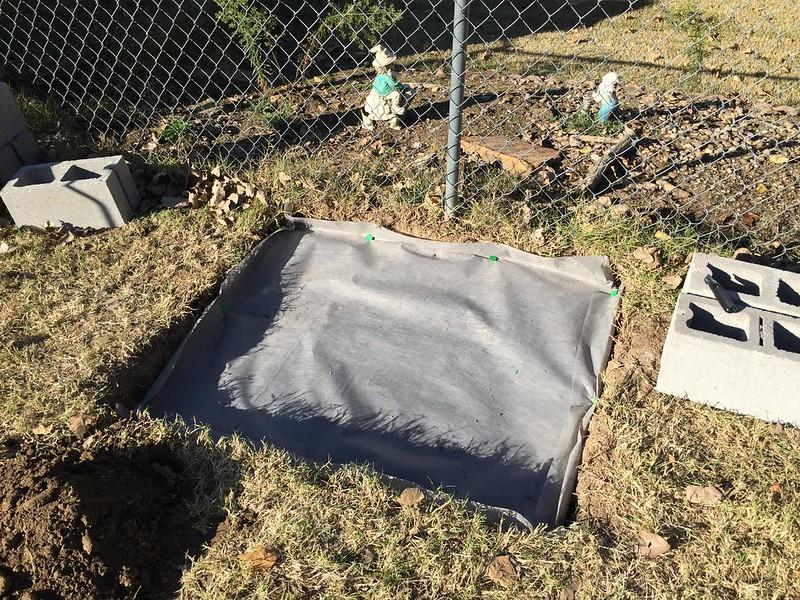
Landscape fabrics prevent weed growth while also letting water, air, and nutrients reach the soil.
A quick and easy way of preventing weeds from taking hold in large outdoor spaces is to use landscape fabrics. Landscape fabrics work by blocking the sunlight from reaching the ground, killing the weeds, or stopping them from growing.
However, not all landscape fabrics are made equally. You will need to choose the right landscape fabric that is durable and able to let nutrients and air reach the soil.
We suggest you use a landscape fabric made of polyester or polypropylene fibers. The material of these landscape fabrics is quite resilient and easily able to withstand years of wear and tear as well as heavy foot traffic.
Even though landscape fabrics work fine on their own, it is best to cover them with mulch or other types of ground cover.
Also, installing a landscape fabric is as easy as spreading a bed sheet over your bed. However, it is still important to prepare the ground to ensure a flat surface and prevent damaging the fabric during application. Here’s how you can do it properly:
- Dig out all the weeds and other vegetation from the soil. Make sure you get the roots of the weeds, as some weeds can spread even when covered with landscape fabric.
- Rake the soil thoroughly to ensure a flat surface. Also, pick up any objects that could damage the landscape fabric from underneath.
- Lay out the landscape fabric and secure it with staples. Also, make sure the landscape fabric overlaps several inches at the seams.
Promote Lawn Health
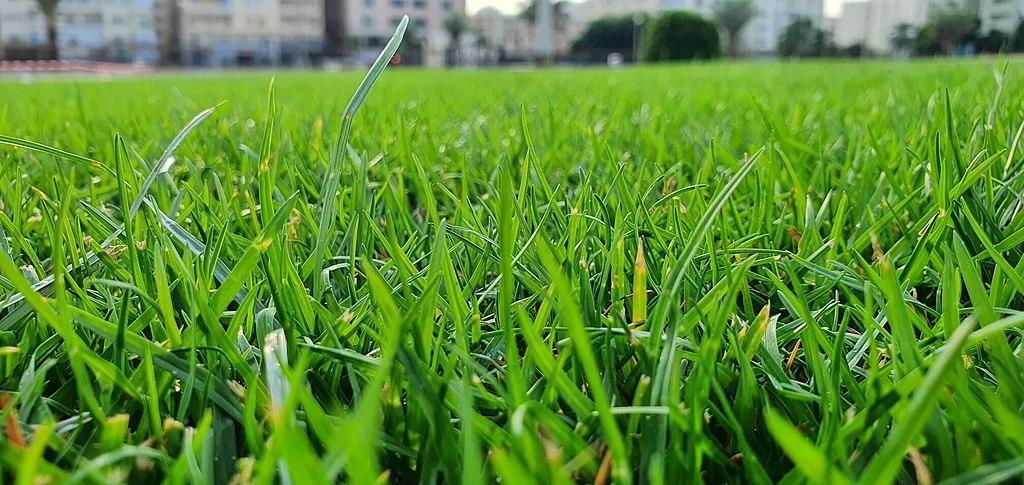
A thick and dense turf on its own is an excellent defense against pesky lawn weeds.
Regular lawn care and maintaining a healthy lawn can also be an effective way of preventing the weeds from taking hold of your lawn in the first place. Lawns that are healthier and are regularly maintained develop a deeper root system.
Thus, they are better equipped to compete with the weeds on their own. For instance, mowing your lawn regularly is an excellent weeding practice on its own.
Many weeds spread via seed heads. If you regularly cut off the top parts of pesky lawn weeds, their chances of spreading will be significantly reduced.
Aerating the soil can also help with weed control. However, do not aerate the soil while you still have weeds in your lawn, as it can result in the accidental spread of weeds to other lawn areas.
Dispose Of Weeds Properly
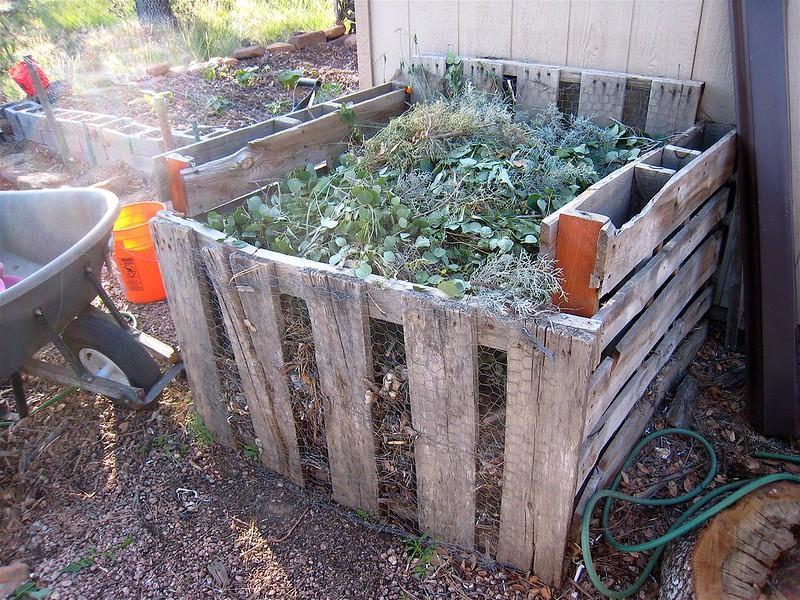
Compost weeds before they go to seed, or composting might do your lawn more harm than good.
A hard day of work that is spent weeding your lawn can quickly be undone, if you do not dispose of the weeds properly. If you do this last step of weed removal poorly, trust us, you are simply providing weeds with another opportunity to appear again and, once again, take hold of your beloved lawn.
It is best to place the collected weeds into a durable plastic bag and put them in trash cans, away from the lawn space. If feasible, you can also burn the weeds, killing them for good. However, if that is not an option, at least let the weeds dry in the sun before disposing of them.
Also, we suggest not using weeds in compost. This is because many weeds have seeds that can survive for long periods of time. And if you use compost that contains weed seeds, you will end up with more weeds in your lawn than you started with after a while.
However, if you are keen on using weeds in compost, make sure the weeds have not flowered or produced seeds.
Frequently Asked Questions
Is it Better to Pull Weeds or Spray Them?
It will all depend on your needs. For instance, pulling weeds will take too much time in large open areas. In such scenarios, spraying the weeds with a herbicide is the best way to go forward. However, in small areas such as home lawns and gardens, hand pulling the weeds is the way to go. It will not only save you from the harmful side effects of chemicals but also save you the money that will otherwise be spent on lawn care.
What kills weeds down to the root?
There are many things that you can use to kill the weeds down to the roots. For instance, white vinegar can be used to kill all parts of a weed. The acidic nature of vinegar burns any organic matter it comes in contact with. However, you might have to spray vinegar multiple times and wait for a few days to kill the roots of the weed entirely.
What kills weeds permanently but not grass?
Selective herbicides are your only option if you are looking to kill specific weeds in your lawn while also not harming other vegetation. Unfortunately, most homemade weed killers are non-selective, which means they can also damage the desirable plants of your lawn and garden. If you are looking to remove selective weeds from your lawn, do your research or consult a professional before treating the weeds with a herbicide.
Do you like our what kills weeds permanently article? Check out our other articles:
How To Use a 2,4-D Lawn Weed Killer To Control Weeds? (And Is It Safe?)
Garden Weeds With Pink Flowers (And How To Get Rid Of Them?)
Spiky Weeds That Can Ruin Garden Beds (And How To Get Rid Of Them?)







